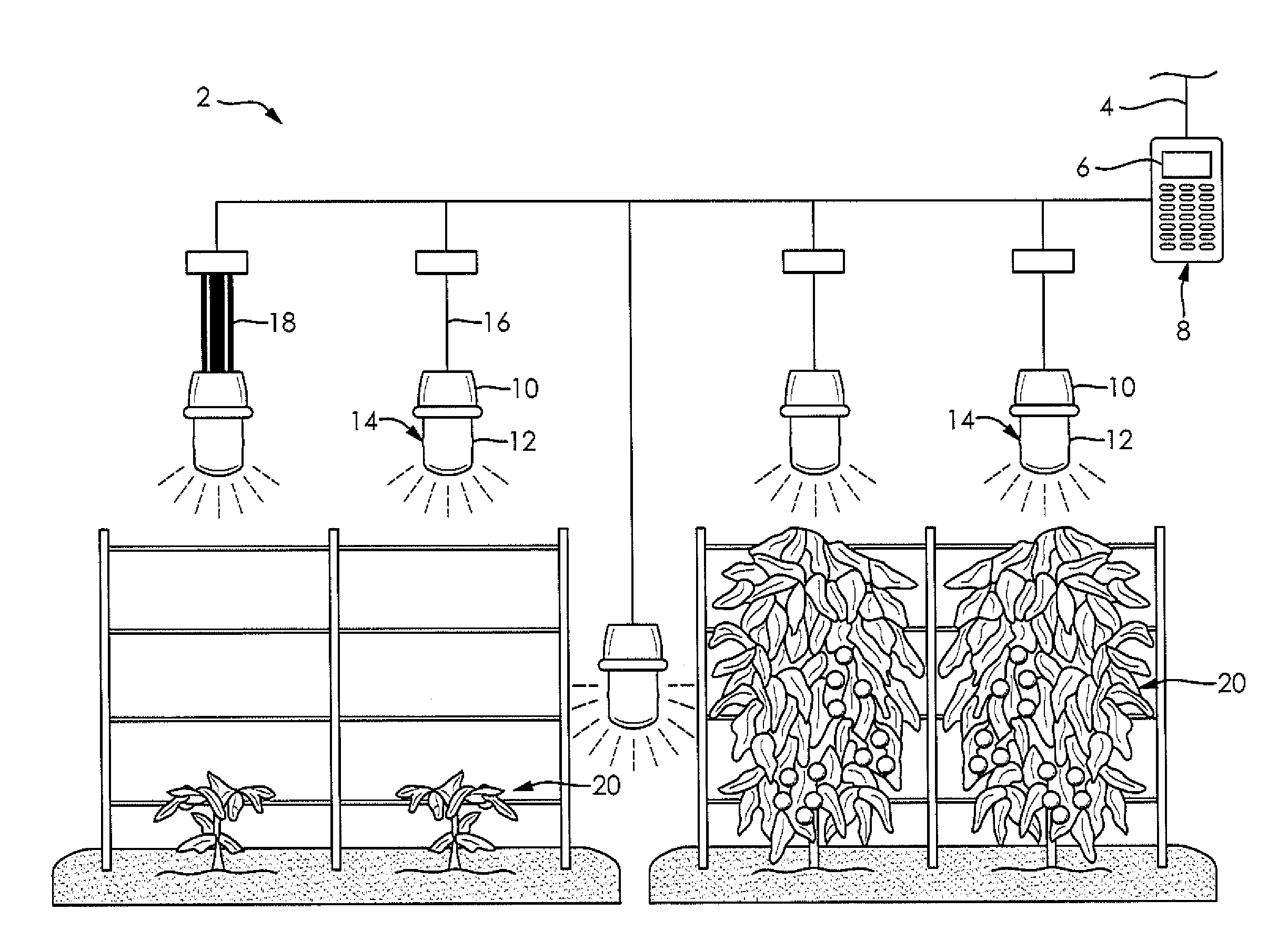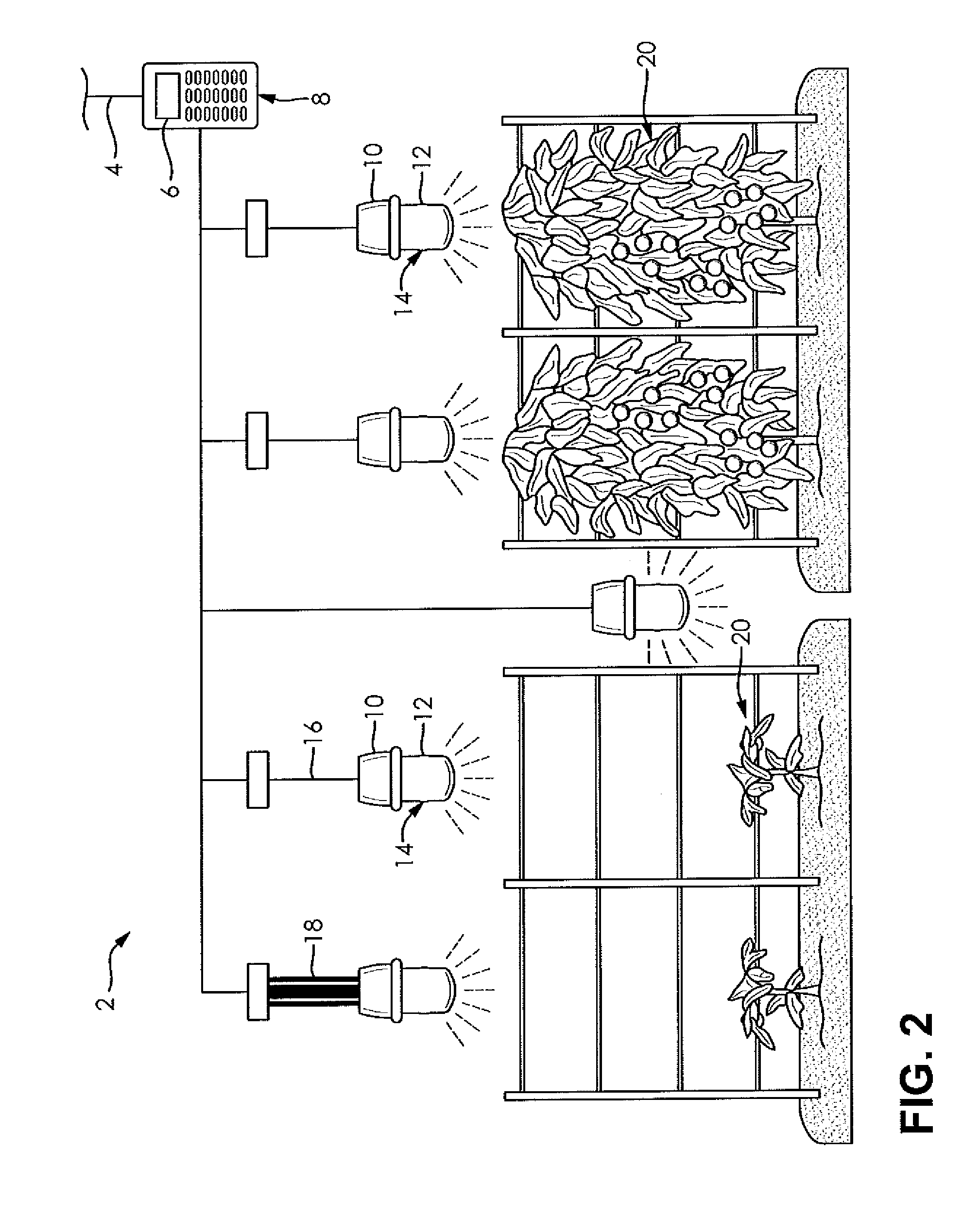Lighting system for plants
- Summary
- Abstract
- Description
- Claims
- Application Information
AI Technical Summary
Benefits of technology
Problems solved by technology
Method used
Image
Examples
examples
[0046]FIG. 7 shows a bar graph representing average flowering time of tomato plants for three different light sources: Sodium-vapor; natural; and stroboscopic. In this example, three (3) plants of each of seven (7) species were tested under each of the three different lighting sources, giving twenty-one (21) plants per light source, and a total of sixty-three (63) plants.
[0047]All exposures to stroboscopic lighting in the example of FIG. 7 were performed according to the method of the present disclosure, using stroboscopic lamps producing light in a wavelength of 450-950 nanometers, having a peak candela of about 175,000, and a flash rate of about 65-95 flashes per minute. The stroboscopic lamps were suspended above the plants and, when natural lighting was not yet available in the morning and evening hours, the stroboscopic lamps were cycled through alternating on-periods of about 2 minutes and off-periods of about 20 minutes for a predetermined cycling time of about 1-½ hours. Sod...
PUM
 Login to View More
Login to View More Abstract
Description
Claims
Application Information
 Login to View More
Login to View More - R&D
- Intellectual Property
- Life Sciences
- Materials
- Tech Scout
- Unparalleled Data Quality
- Higher Quality Content
- 60% Fewer Hallucinations
Browse by: Latest US Patents, China's latest patents, Technical Efficacy Thesaurus, Application Domain, Technology Topic, Popular Technical Reports.
© 2025 PatSnap. All rights reserved.Legal|Privacy policy|Modern Slavery Act Transparency Statement|Sitemap|About US| Contact US: help@patsnap.com



